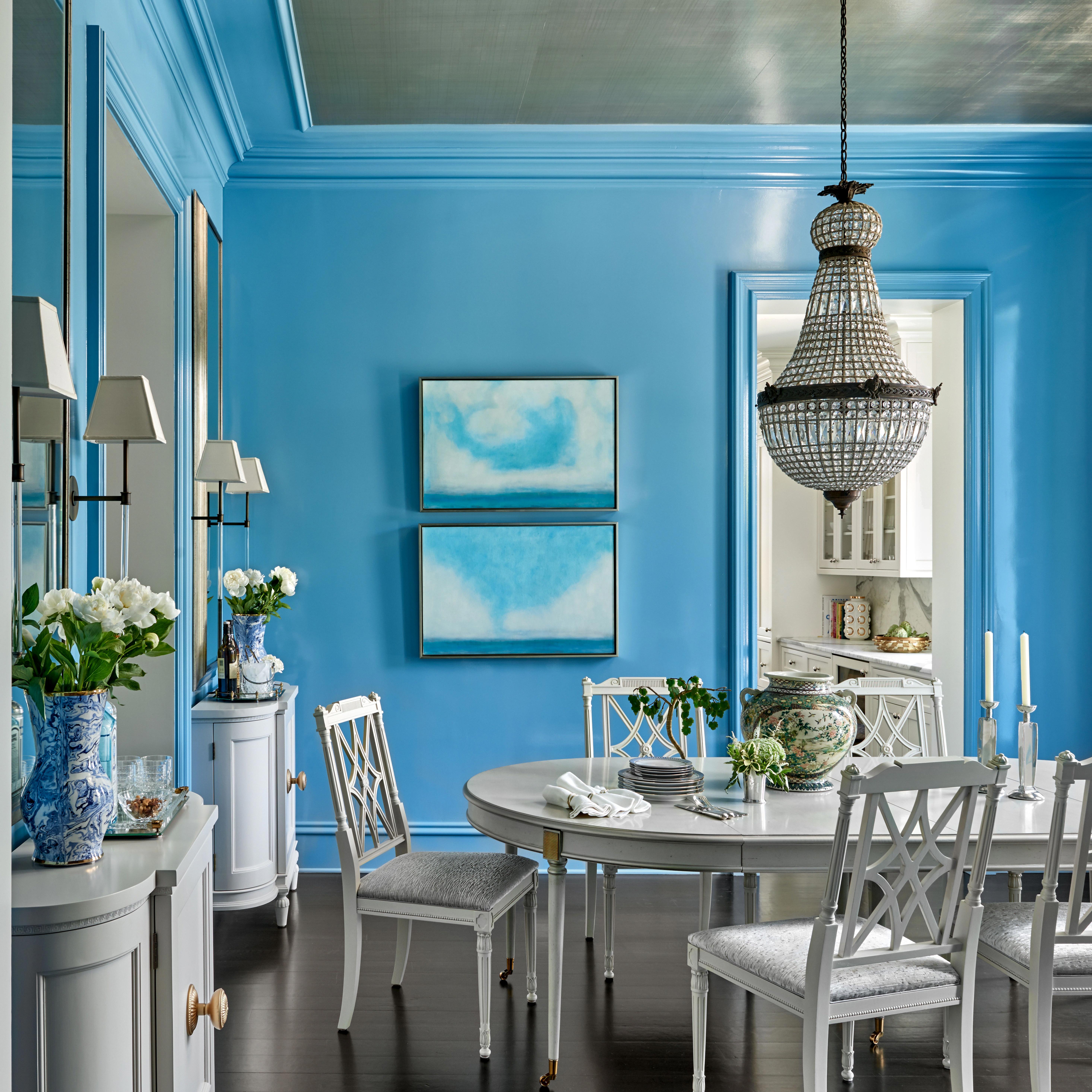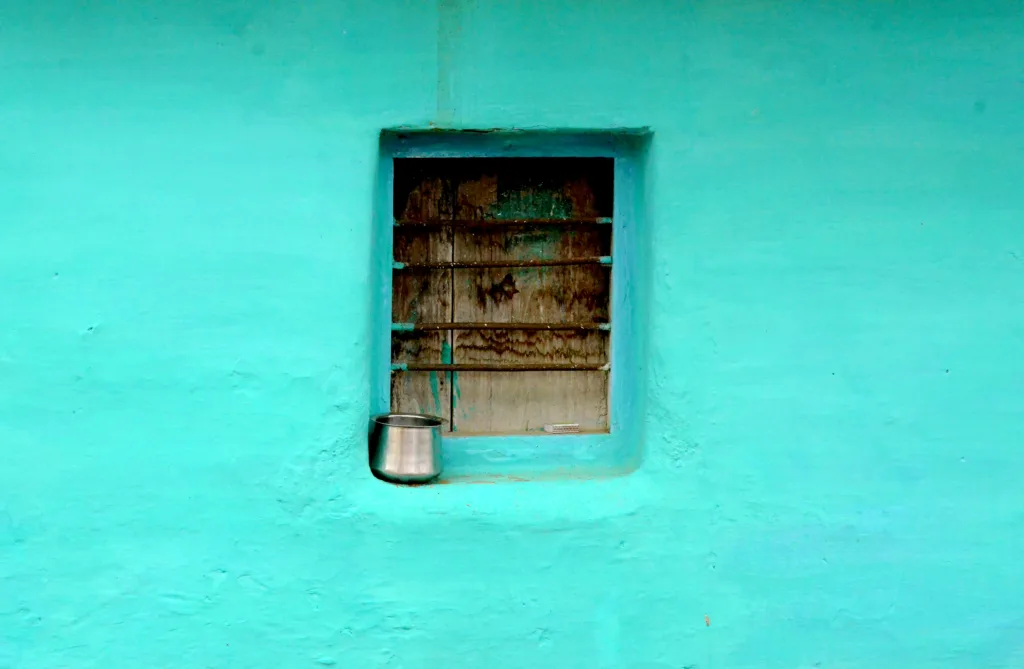Cerulean blue is a popular color in the world of art, and is known for its unique greenish-blue hue. It is a versatile color that can be used to create a variety of different looks and moods, depending on how it is used and mixed with other colors. One of the questions that often arises when working with cerulean blue is whether it is a warm or cool color.
First, it’s important to understand what we mean by “warm” and “cool” colors. The concept of warm and cool colors is based on their position on the color wheel. Warm colors are those that are closer to red, orange, and yellow, while cool colors are closer to blue, green, and purple. Warm colors tend to be associted with energy, excitement, and passion, while cool colors are associated with calmness, serenity, and relaxation.
When it comes to cerulean blue, it is generally considered to be a cool color. This is because it is closer to blue and green on the color wheel, rather than red, orange, or yellow. However, it is important to note that there are different shades and variations of cerulean blue, some of which may have warmer or cooler undertones.
For example, some artists may consider ultramarine blue to be a warmer blue than cerulean blue, because it has more of a reddish undertone. On the other hand, some artists may consider phthalo blue to be a cooler blue than cerulean blue, because it has more of a greenish undertone.
Ultimately, whether cerulean blue is considered warm or cool may depend on the context in which it is used, as well as personal preference and interpretation. Some artists may choose to use cerulean blue as a cool accent color in a painting, while others may use it as a warm base color for a more vibrant and energetic look.
Cerulean blue is generally considered to be a cool color, but there may be variations and nuances in its undertones that can affect how it is perceived. As with any color, the best way to determine whether cerulean blue is warm or cool is to experiment with it in different contexts and mixtures, and see how it interacts with other colors and elements in a painting.
Complementary Color of Cerulean Blue
Cerulean blue is a popular and widely used color in various industries ranging from fashion to graphic design. When it comes to color theory, every color has a complementary color, which is the color directly opposite it on the color wheel. The complementary color of cerulean blue, therefore, is orange.
Orange is a warm and vibrant color that is created by mixing red and yellow. However, when creating an orange color that complements cerulean blue, it is recommended to use a mixture of primrose and vermillion. These two colors combine to create a rich and warm orange hue that perfectly complements cerulean blue.
Understanding complementary colors is essential in various industries where colors play a crucial role in the design process. Complementary colors are oten used to create contrast and visual interest in designs. Using complementary colors in your designs can help you achieve a visually appealing, cohesive, and balanced look.
The complementary color of cerulean blue is orange, created by mixing primrose and vermillion. Understanding complementary colors is essential in various industries, and it can help you achieve a visually appealing and balanced design.

Source: architecturaldigest.com
Warm Shades of Blue
When it comes to identifying warm shades of blue, there are a few colors that immediately come to mind. Ultramarine and Indanthrone Blue are two classic examples of warm blues. These colors have a reddish undertone that makes them appear warmer than other shades of blue.
Cobalt Blue is also considered a warm blue, although it is almost a primary blue. It has a slightly cooler tone than Ultramarine and Indanthrone Blue, but it still falls witin the warm blue category.
Other shades of blue that can be considered warm include Phthalo Blue (Red Shade), Cerulean Blue (Red Shade), and Prussian Blue. These colors also have a reddish undertone that gives them a warm appearance.
It’s worth noting that warm blues are often used in painting to create depth and contrast. When paired with cool colors, warm blues can make a painting feel more dynamic and visually interesting.
Ultramarine, Indanthrone Blue, Cobalt Blue, Phthalo Blue (Red Shade), Cerulean Blue (Red Shade), and Prussian Blue are all considered warm shades of blue due to their reddish undertones.
The Temperature of Cerulean Blue Watercolor
Cerulean blue is considered a cool color in the world of watercolor painting. It has a greenish-blue hue, whch makes it an ideal choice for creating cool-toned shadows and highlights. Due to its cool nature, it is often used to create the impression of distance and depth in landscapes.
Cerulean blue is a semi-transparent color, which means that it can be layered on top of other colors to create different shades and tones. Although it appears to be a strong color when used on its own, when mixed with other colors, it can become much weaker in strength.
When using cerulean blue in a watercolor painting, it is best to pair it with other cool colors, such as ultramarine blue, viridian, and phthalo blue. This will help to maintain the cool tone of the painting and ensure that the colors work harmoniously together.
To summarize, cerulean blue is a cool color in watercolor painting, with a greenish-blue hue. It is ideal for creating cool-toned shadows and highlights, and can be layered on top of other colors to create different shades and tones. When using cerulean blue, it is best to pair it with other cool colors to maintain the overall cool tone of the painting.
Is Ultramarine Blue Warm or Cool?
When it coes to color theory, every color has a temperature associated with it. Ultramarine Blue is considered a warm blue due to the presence of red undertones in its composition. The color temperature of Ultramarine Blue sits towards the violet end of the color spectrum, making it a cooler blue than warmer blues like cerulean or phthalo.
It’s worth noting that Ultramarine Blue is a sedimentary pigment, meaning it is made up of small particles that settle to the bottom of the container. This makes it a strong pigment that can be mixed well with other colors to create rich, strong darks or subtle greys and mauves.
Ultramarine Blue is a warm blue with red undertones that leans towards the violet end of the color spectrum. Its sedimentary nature also makes it a versatile pigment that can be mixed with other colors to create a range of shades and tones.

Conclusion
Cerulean Blue is a versatile color that can be used as a cool blue on the palette. It is a bright, semi-transparent greenish-blue that appeas strong at first, but can weaken in strength as it is mixed with other colors. Cerulean Blue is a complementary color to orange, and can be made by mixing Primrose and Vermillion. It is a popular choice for artists who want to create a range of blues, from subtle greys to rich, strong darks. Cerulean Blue is a valuable addition to any artist’s palette, and its unique properties make it a must-have for those looking to achieve a wide range of blues in their paintings.
